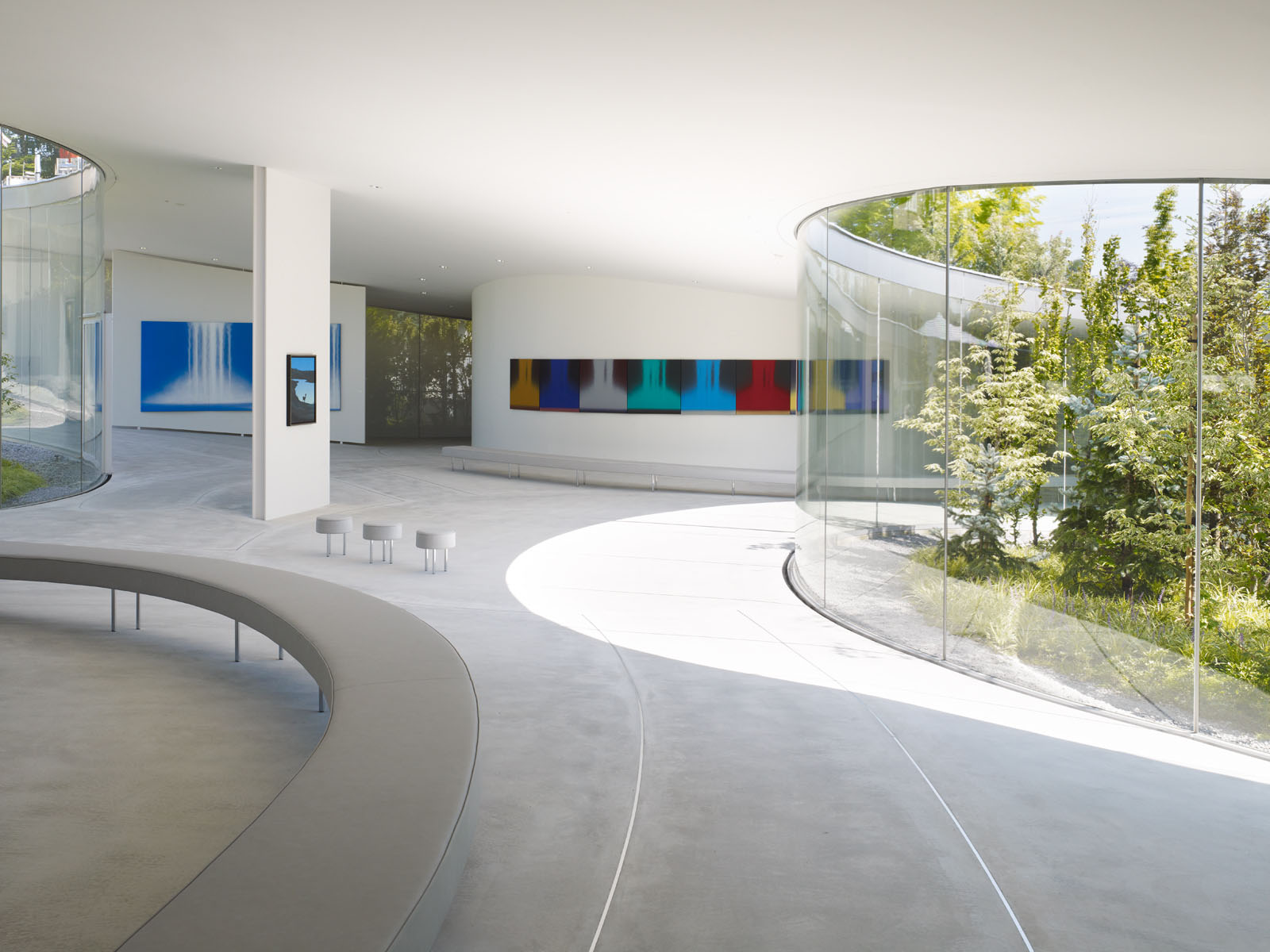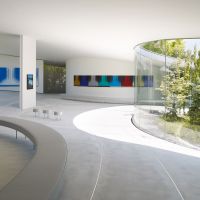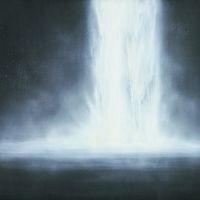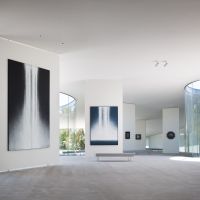The floor is made of white concrete, but it hugs the contours of the ground so closely that it could be satin cloth. And the roof, apparently anchored to the ground only by a curtain of glass at its perimeter, appears to float in mid-air like a giant magic carpet.
The Hiroshi Senju Museum Karuizawa, which opened on Oct. 10 in the mountain resort of Karuizawa, Nagano Prefecture, is named for the artist whose work it celebrates, but it is no less a monument to the accomplishments of its architect, Ryue Nishizawa.
Nishizawa, both working alone and with his partner Kazuyo Sejima in the firm SANAA, has gradually revolutionized museum architecture in this country. Right through the 1990s, such buildings had been all about heavy stone, concrete and steel forms — architectural expressions of the facilities' aspirations to authoritativeness. But that trend ground to a halt in 2004 when SANAA opened its single-story, glass-walled 21st Century Museum of Contemporary Art, Kanazawa. Since then, Nishizawa has created a series of light-as-air museums around the archipelago. The Towada Art Center opened in Aomori Prefecture in the north in 2008; the Teshima Art Museum opened on an island in the Seto Inland Sea, in the west, in 2010. And now, as though to fill in the gap in central Japan, we have the Hiroshi Senju Museum Karuizawa.
The new museum, the undulating floor of which measures about 1,500 sq. meters, is owned and managed by the International Cultural College Foundation, a Tokyo-based group that operates correspondence courses in business, photography and art.
"It was initially intended that the land in Karuizawa would house an employee recuperation facility, but the foundation decided they wanted to do something that would be open to the public," explained museum press representative Akiko Onishi.
"They had purchased one of Senju's paintings and gradually developed a relationship with him," she added, explaining why they chose to dedicate their museum to a single artist.
The foundation now owns about 100 works by the painter, with the museum being large enough to accommodate about half that number at any one time.
Senju is one of the best-known artists working in the nihonga (Japanese-style painting) tradition. His large-scale murals, often depicting broad waterfalls, grace several of the walls in the new International Flight Passenger Terminal Building at Tokyo's Haneda Airport, and he also represented Japan at the Venice Biennale in 1995.
Onishi reports that it was Senju who suggested that Nishizawa design the new museum. "Senju believes that nihonga paintings are best seen in natural light," she said, adding that the glass exterior walls of the museum have been treated to screen UV light in order to protect the artworks.
With several large "holes" in the roof along with the white floor and glass walls, the museum is one of the brightest in Japan, with almost no need for artificial light on a sunny day.
The paintings hang on short, narrow internal walls that are positioned almost randomly throughout the museum. Those walls are so delicate they are reminiscent of playing cards, and yet it is actually they, and not the external glass wall encasing the museum, that support the weight of the undulating roof.
Senju's willingness to have his nihonga paintings shown in natural light is unusual; paintings made with that historical technique using mineral pigments are generally thought best shown in tatami-mat rooms under muted lighting. But the gamble has paid off. When viewed in even, natural light, the bold planes of Mediterranean blue in his "When the Stardust Falls" series and the shimmering whites of his "Waterfall" series take on a freshness that identifies them immediately as contemporary, despite the historicity of their painterly technique.
Nishizawa, who last year won the Pritzker Architecture Prize along with his SANAA partner Sejima, has achieved something unusual in this museum: He has created a space that allows the familiar paintings of an established artist to be seen in a completely new light, literally — and they benefit from it immensely.
The Hiroshi Senju Museum Karuizawa is located at Shiozawa in Karuizawa, Nagano Prefecture; admission ¥1,200; open 9:30 a.m.-5 p.m., closed Tue. For further details, visit www.senju-museum.jp.




















With your current subscription plan you can comment on stories. However, before writing your first comment, please create a display name in the Profile section of your subscriber account page.